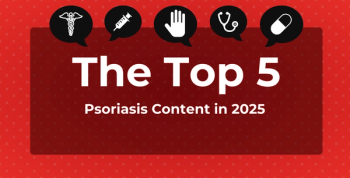
Study Identifies High Burden of Invasive Infections in Neutropenic Patients
One-third of neutropenic patients developed invasive infection following intensive chemotherapy, which was significantly associated with an increase in mortality up to 100 days after the start of neutropenia.
Patients with prolonged neutropenia caused by either chemotherapy or underlying marrow disorders are at risk of invasive bacterial and fungal infections. According to a new study, one-third of neutropenic patients develop invasive infection following intensive chemotherapy, which is significantly associated with an increase in mortality up to 100 days after the start of neutropenia. This high risk of invasive infection, and subsequent mortality, highlight the need for new treatment options, and granulocyte transfusions (GTX) might fill that role.
The researchers enrolled 471 patients receiving myeloblative chemotherapy who were anticipated to develop 7 or more days of neutropenia between December 2011 and June 2013. Patients were followed for the development of invasive infections and mortality for up to 100 days.
Acute myeloid leukemia was the most common malignancy, and of the 305 patients undergoing stem cell transplantations (SCTs) at the time of first neutropenic episode, 141 received an autologous SCT and 166 received an allogeneic SCT.
There was a total of 569 neutropenic episodes. During their first neutropenic episode, 153 (32.5%) patients developed invasive infections, and the proportion remained at 32% when reported for all neutropenic episodes. Most patients experienced 1 infectious event per neutropenic episode. Two patients experienced 3 infectious events during 1 neutropenic episode.
Patients with myelodysplastic syndrome or AML had an increased risk of invasive infection (hazard ratios, 1.6 and 1.4, respectively), as well as patients with higher comorbidity scores. Invasive infection occurred at a median of 6 days after the start of neutropenia.
The most common type of infection was bacterial infections (59.4%), followed by fungal infections (22.3%) and tissue invasive infections (15.9%).
“The all-cause mortality in patients with invasive infections was much higher in the infection group up to 100 days after neutropenia,” wrote the researchers, reflecting on a hazard ratio of 5.8. Among patients with infection, 28 died within 100 days compared to 9 in the noninfection group.
While 34 patients fulfilled criteria for GTX, just 9 received granulocytes. According to the researchers, this low proportion may be attributable to lack of availability of granulocyte products, an already poor prognosis, or physicians doubting the effectiveness of GTX.
With a significant mortality rate associated with these invasive infections, there is a need for alternative strategies for treating these patients, which may include a better understanding of the role of GTX, according to the researchers.
Reference:
Netelenbos T, Massey E, Wreede L, et al. The burden of invasive infections in neutropenic patients: incidence, outcomes, and use of granulocyte transfusions [published online November 1, 2018]. Transfusion. doi: https://doi.org/10.1111/trf.14994.
Newsletter
Stay ahead of policy, cost, and value—subscribe to AJMC for expert insights at the intersection of clinical care and health economics.








































